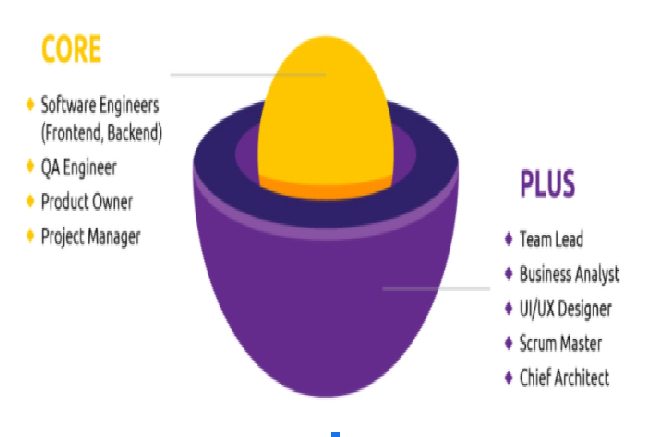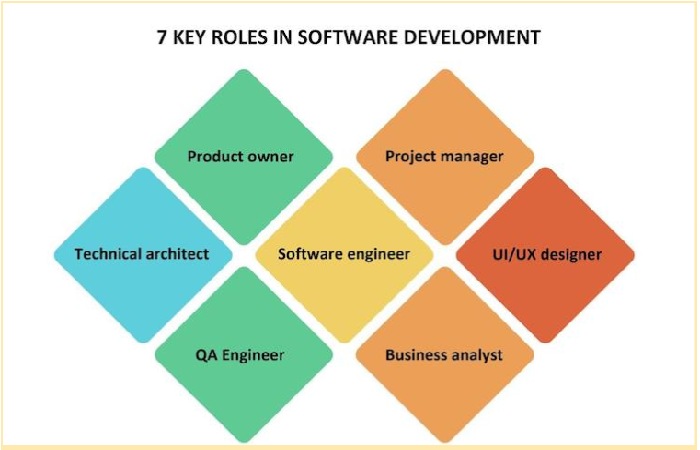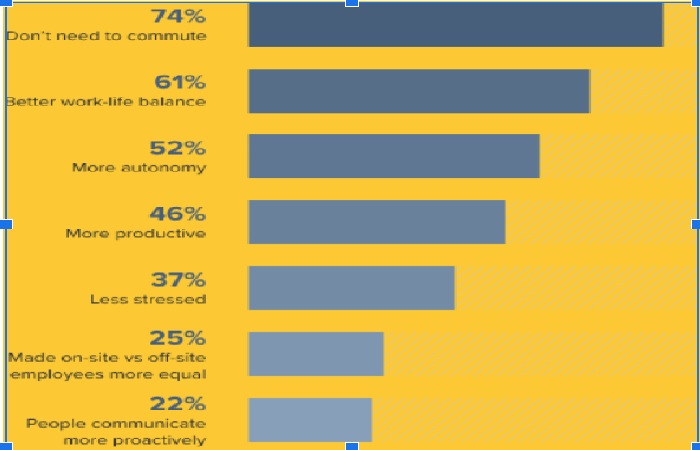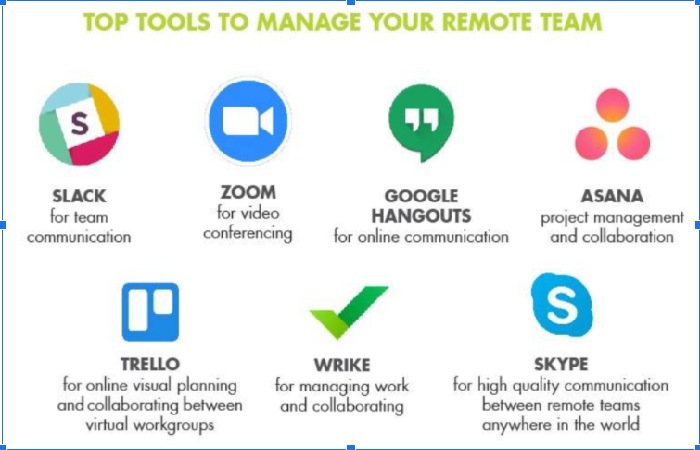Putting Together The Perfect Team of Software Developers While Working Remotely – Building a remote software development team is the next logical step for many companies. They hire remote software developers because programmers work best in a flexible environment.
About 16% of the global workforce are already working full-time from home in 2021. As a result, the concept isn’t nearly as complicated as it used to be. Many companies also agree that remote working can remain in at least some areas.
In addition, 89% of workers want to work from home at least part of the time. In one survey, 39% said they would quit if their companies didn’t allow working from home.

Remote working can even increase productivity in roles that require deep concentration. Software developers often perform better and have less distraction, which is typical in a shared office. They also usually communicate digitally, even with colleagues in the same place. Consequently, they are less likely to feel isolated or disconnected.
Ideamotive is a well-known remote work advocate. Hence, we know exactly that with the preparation for remote teams, the next step is to hire remote software developers.
Define Roles and Responsibilities
The structure of the software development team depends on your needs. One project may require only mobile app developers, while another may require a full-fledged cross-functional software development team.
What is the Ideal Team Size?
A typical productive software development team consists of 5-7 people. This size allows each team member to fully immerse themselves in the details of the project and understand the scale, problems, and possible solutions. If the team is more than 7 people, you will need to establish guidelines, work processes, and always be ready to coordinate the overcrowded group (or hire someone to coordinate it for you).
One of the hallmarks of ideal team size is that the team can manage itself and independently develop the project.
Roles You May Need

Software Engineers
Depending on your needs, you can be completely satisfied with one full-stack engineer.
Who you will definitely need (sooner or later) is a senior or two. Their experience and deeper knowledge will cost you more, but the investment will pay off. With the strategic thinking, experience, and intuition of older people, you can avoid many mistakes and ultimately get a better product.
If in the end, it turns out that other skills are needed as well, senior developers are experienced enough to tweak their skills on the fly. So switching from Angular to React developers, for example, won’t take a lot of effort.
QA Engineer
QA Engineer helps you analyze test results and find bugs at the initial stage of software development, as well as validate the product before it is launched. Their ultimate goal is to ensure that the product meets all the requirements of the product owner.
Project Manager
The role of the project manager is to communicate with the client, process the necessary documentation, prepare the budget, sign the SOW, lead the team and ensure that they are held accountable for the end results.
In addition to managing all of your projects, the project manager will also manage prioritization and monitor development team members for signs of burnout.
If you can’t afford or can’t find a good project manager, you should become one. Consider developing your own project management skills with appropriate training, or at least consult with project managers or line managers you know.
Scrum Master
The role of the Scrum Master is not only to implement the Agile principles and ensure that the software development team adheres to them but also the client so that they do not interrupt sprints with unexpectedly added features, etc. If there are any changes to implement they should be addressed to the Product Owner and added to the Product Backlog unless otherwise agreed. In many teams, project managers act as Scrum Masters.
Team leader
The team leader is responsible for the technical implementation of the project. Usually, the leader is also an active member of the development team, so they know the technical needs of the project well.
Remember that a team leader and a project leader are not the same things. The overall responsibility of the project manager is to ensure that the project is well planned and that their team of, for example, Ruby on Rails developers is performing at its best. The team leader is responsible for the day-to-day responsibilities and efforts of the technical team and ensures that all the resources required for the project are available.
The team leader is vital to every technical team. The more teams, the more leaders. To become a team leader, a software engineer must be a good person and, more importantly, know how to lead people and take care of their needs.
Chief Architect
Whether you need a chief architect or not, depends on the complexity of the product and the skills you have in your current engineering organization. If you have a complex company structure with multiple departments and many development teams, you may need someone to coordinate the workflow between these teams. When your technology challenges start to go beyond the capabilities of your current team, or when technical changes become very difficult, then it’s time to consider hiring a chief architect.
Business Analyst
The main function of a business analyst is gathering requirements and understanding project scope, client needs, and pain points. The detailed business analysis includes about the problems, opportunities, and solutions for the business, as well as planning, budgeting, and reporting.
UI/UX Designer
They create the best user experience by exploring many different approaches to solving end-user problems.

Tips for Managing a Remote Software Development Team
Excessive Communication is Critical for Remote Teams
One tip for managing remote software development teams is “over-communication.” What does it mean? Do not communicate as little as possible, this can leave team members feeling insecure. Communication is critical when running a remote team because you don’t have the same level of informal rapport as you do in person.
Another thing you can do is send follow-up emails after calls. This helps to ensure that all questions are covered and to ensure that no one is left unanswered.
Time Zones and “Common time” for Synchronous Conversations
One of the biggest problems is time zones. You need to decide if you want a consistent “common time” or whether it is acceptable for team members to work outside of office hours. The advantage of sharing time is that all team members work at the same time and can talk in real-time, which means more collaboration and fewer misunderstandings.
Look for Evidence of Self-Management When Recruiting
One of the most important qualities to look for in, for instance, React Native developers is self-management. You need someone who can think critically and come up with solutions instead of being told what to do. Self-goers can also see other people’s advice and act accordingly; they are not chained, blindly following someone else’s instructions, not understanding why they do it anyway.
A Clear Introduction And Product Vision
Direct connectivity and product vision is a must for remote teams. Having a clear message about what the team will work on, how they will work together, and their managers can help reduce confusion between teammates.
By providing clear roles and responsibilities and understanding company goals early in the process (even during the employee training phase), you enable your new hires to get started with less stress.
Goals Above Working Hours/Goals that Inspire Results
Goals are more important than the number of hours your team is working. You can never get a team to work harder by working with them for more hours. Instead, you want your team to pursue goals that inspire results. This is important because research has shown that employees will work harder and report their productivity by 46% if the goals of the personnel are aligned with the priorities of the organization.

Make Sure Your Team Knows What They are Working on:
- Communicate with your remote teams (or any team) so that everyone has a clear understanding of the goals of their projects.
- Get in the habit of regularly informing them about progress made or obstacles encountered.
This way, you will avoid being overwhelmed when someone sends an email asking for an update; instead, you can proactively provide updates as they become available.
Tools That Support or Hinder Engineers
Remote software development teams need good tools. These tools should provide instant messaging, time tracking, file sharing, and scheduling.
Here are a few of the great remote software development tools on the list:
- Slack – works well with external contributors as it has a chat option.
- Zoom is a video conferencing solution that is easy to use and scalable to suit your team’s needs. It also offers a screen-sharing function when needed.

Invest in a Team Leader and Celebrate Small Accomplishments
This person should be able to take on tasks when needed and provide updates ahead of time. This lead engineer will also find it helpful to celebrate small accomplishments to maintain high morale among team members who are far apart. One way is to reward team members who put in their best efforts or complete important work on time. Praising publicly in front of the entire team is good for team morale.
Closing Thoughts About Putting Together The Perfect Team of Software Developers While Working
If you’ve always worked in the same building with your team, you will have a rather rude awakening. However, if you persist and learn how to manage remote teams, the benefits are incredible. Great development teams are scattered all over the world, and the quality of work never depends on geographic location.
With collaboration software, video conferencing tools, and SaaS for project management, there are no more hurdles that once required a team to be on-premises. And if managed properly, a remote team can do wonders for your project.
Also Read: Learn – How you can become a Scrum Master Through CSM® Course Online
